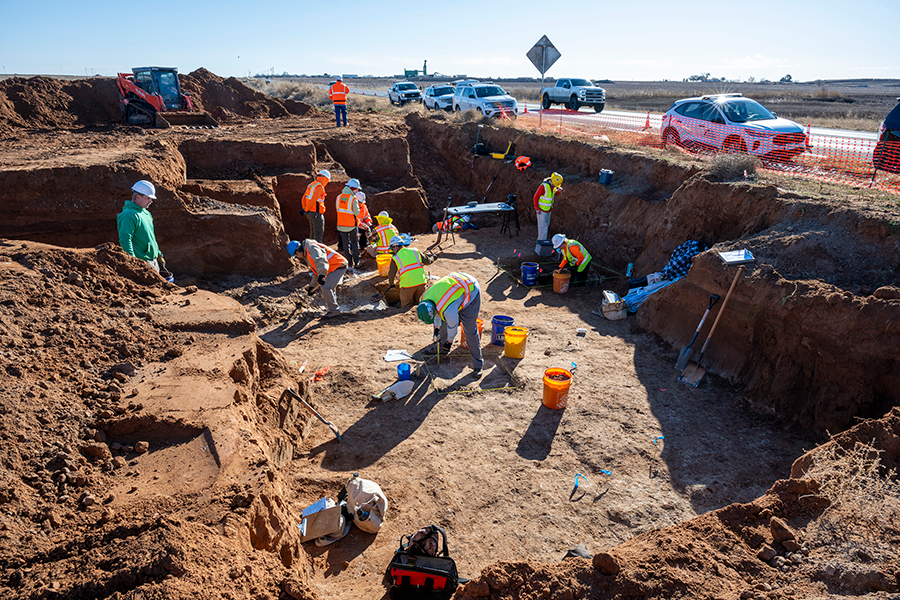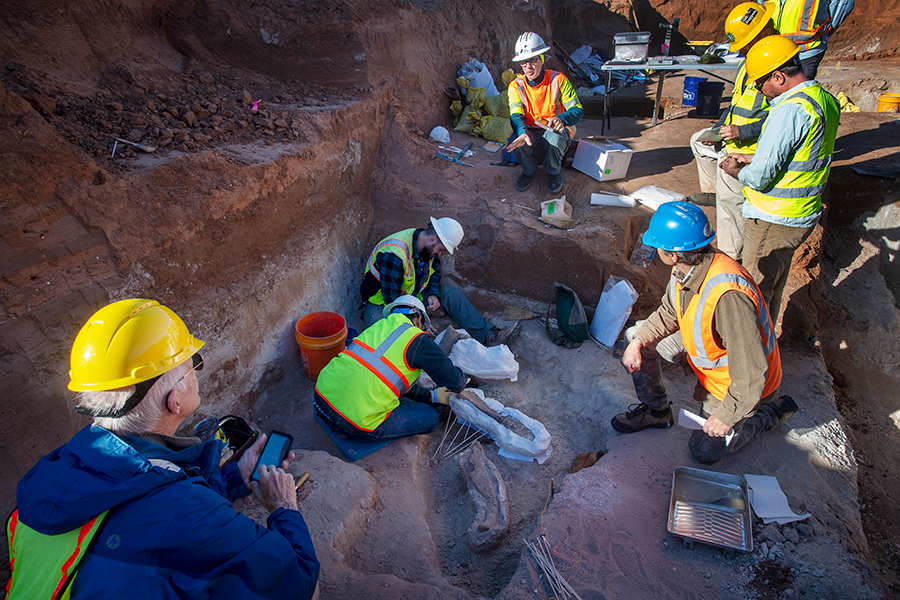
May 13, 2025
By Shannon McIntire
LUBBOCK — Stunning discoveries sometimes lie just below the surface. A recent archeological excavation in the Lubbock area unearthed some colossal creatures. And the discoveries are just beginning.
“During the environmental review for Loop 88, TxDOT contracted an archeological survey,” said Chris Ringstaff, project planner with TxDOT’s environmental affairs division. “They found the bones of some large, prehistoric animals called megafauna, which is not unusual in the region.”
The Panhandle area is home to many playas — remnants of lakes from the Ice Age. In prehistoric times, animals and humans used playas as water sources and these sites can sometimes contain evidence of human activity.
“If the site involves humans, we have to address road construction impacts under state and federal law,” Ringstaff said. “If the site has no artifacts and dates to a time well before humans, TxDOT will recommend no further work, and the project can proceed to construction.”
Given that Texas has other sites that show human activity with megafauna, TxDOT staff decided to take a closer look at the Loop 88 location. They opted for a process called staged mitigation that involves archeological excavation to look for human artifacts like chipped stone or spear points.
“Excavation is one of many steps TxDOT can take prior to road construction to ensure that Texas history is preserved,” said Cultural Resources Section Director Rebekah Dobrasko.
Earlier this year, TxDOT staff and consulting archeologists excavated bones and took geologic and sediment samples for fine screening. TxDOT is also collaborating with the Museum of Texas Tech University for assistance with preparation, identification and housing of the bones.
“We know we’ve found giant ground sloth by its distinctive tooth,” Ringstaff said. “Whether all the bones are giant ground sloth or there are different animals such as mammoth or mastodon, we’re not sure. Paleontologists will give us positive identification.”
Experts are examining the dirt collected around the bones for micro-artifacts and using geologic dating techniques to get a better idea of the chronology of the objects.
Should the site reveal human activity with megafauna from the Ice Age, it would be first of its kind for a TxDOT project.
Fortunately, even if further excavation is needed, the work is still well ahead of any project construction. TxDOT receives design plans far in advance to ensure reviews don’t affect a project’s timeline.
“We’re here to get the road built,” Ringstaff said. “But who doesn’t love digging up big ol’ animals?”
